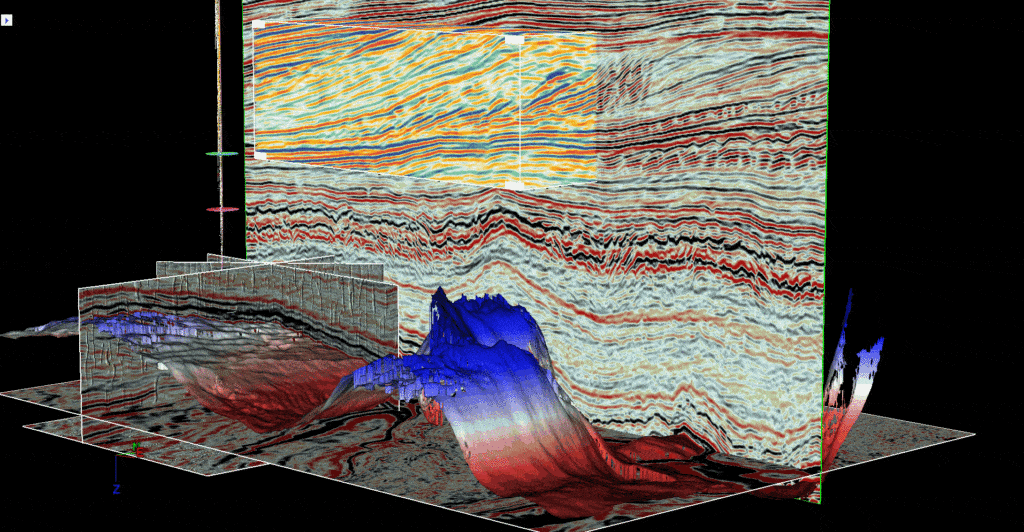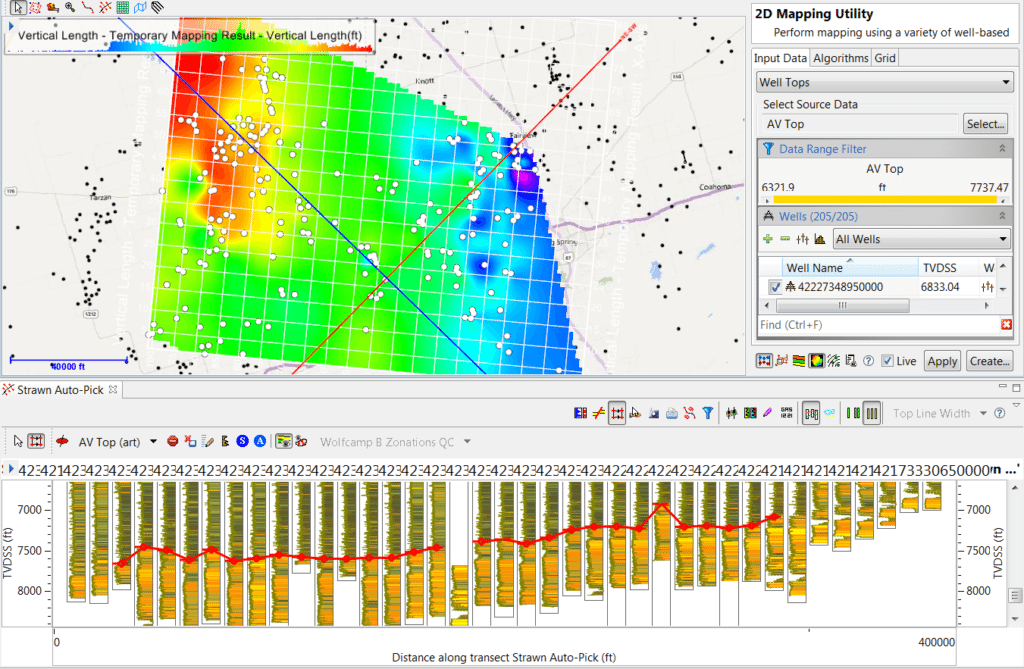Can Machine Learning Help Save the Oil & Gas Industry?

Companies like DrillingInfo are helping develop new machine-learning applications for the oil and gas industry
Figuring out how to effectively apply machine learning may soon become a life-and-death matter for the oil & gas industry. After oil prices crashed in late 2014, investors and lenders throttled back capital availability and forced formerly-profligate energy companies to adopt a more disciplined approach towards spending and development. As a result, the industry has begun to explore applications of machine learning as one tool to help improve productivity and reduce costs throughout the energy value chain[1],[2],[3]. Though the energy industry has for years utilized “big data[4],” machine learning has the potential to take the industry one step further by enabling more integrated decision-making and helping to overcome some of the biases and errors associated with human judgment[5].
DrillingInfo is one such provider of data and analytics that help “exploration and production (E&P), oilfield services, midstream, and financial services companies [become] more proactive, efficient, and competitive.[6]” While the firm’s early products focused on simply aggregating publicly available information from databases and company filings to enable industry benchmarking and cross-company comparisons, its newer product offerings increasingly use machine learning to provide higher-value add analytics for its customers.
In the short term and medium term, DrillingInfo is continuing to enhance its current suite of tools that utilize machine learning. The company has a product called “DI Transform[7]” that uses machine learning to help geologists systematically parse well logs and seismic data and identify productive geological intervals. This software not only reduces the time that would otherwise be required to pick intervals by hand on a series of well logs (hours or days by hand), but also increases accuracy by reducing the error inherent in visual inspection of well logs by humans. Especially for large companies that have databases with thousands of well logs, a computer can be trained to identify patterns by correlating log parameters with actual well performance and thereby improve future identification of productive intervals.
DrillingInfo is also continuing to expand its use of machine learning to offer a broader range of products and services for the energy industry. For example, DrillingInfo acquired Pattern Recognition Technologies (PRT) in December 2017[10]. PRT’s technology is currently focused on using machine learning to forecast electricity demand and generation, and DrillingInfo plans to expand the use of this technology to other energy sectors including oil & gas.
To continue to keep pace with the change in the industry and truly become an indispensable part of the energy value chain, DrillingInfo will need to keep developing new machine learning applications that can help customers solve harder problems. For example, other startups are currently focusing on machine learning applications that use the terabytes of data generated during drilling to instantaneously adjust drilling parameters such as mud weight and rate of penetration, leading to safer and more productive drilling operations[11]. Also, machine learning can be used for predictive maintenance of the large and expensive capital equipment used in the oil & gas industry, thereby reducing the cost of maintenance as well as the cost of non-productive downtime resulting from equipment failure[12],[13]. Hence, by offering machine learning solutions that integrate directly into the oil & gas operations and maintenance workflow, DrillingInfo will be able to better demonstrate the economic value of its products to customers. Otherwise, DrillingInfo runs the risk of remaining a small analytics provider and being disintermediated by its customers.
While DrillingInfo’s progress in the application of machine learning is promising, a few key questions arise about its future. First, to what extent do DrillingInfo’s products demonstrably outperform existing approaches to data analysis and interpretation? The oil & gas industry is often justifiably suspicious about new “black box” technology that claims to do better than highly-trained geologists, engineers, and petrophysicists. The switching costs are always high. Adopting a new technology that doesn’t work as promised can lead to millions of dollars of losses and also endanger lives in the oilfield. While DrillingInfo’s marketing is compelling, the company’s website is sparse on data to support the claims of its efficacy. Second, DrillingInfo will have to contend with rapidly accelerating competition in this sector. Many oil & gas companies are attempting to build increasingly sophisticated machine learning applications in-house, and the largest companies have the financial resources to afford such long-term investments. In recent years, there has also been a boom in the number of startups that are exploring machine learning solutions for the oil & gas industry[14]. To what extent can DrillingInfo remain differentiated in this space, compete with well-resourced companies like Exxon and Chevron as well as nimble startups, and avoid getting disintermediated?
(779 words)
[1] Ward, A. (2017). Blue-chips back oil industry machine learning start-up. FT.com, Retrieved from http://search.proquest.com.ezp-prod1.hul.harvard.edu/docview/1988774709?accountid=11311
[2] Novi labs closes financing round to meet growing demand for its leading oil & gas machine learning software. (2017, Sep 06). Financial Services Monitor Worldwide Retrieved from http://search.proquest.com.ezp-prod1.hul.harvard.edu/docview/1935733933?accountid=11311
[3] Jones, V. (2018, September 20). Machine Learning to Transform Oil and Gas Industry. Retrieved November 13, 2018, from https://www.rigzone.com/news/machine_learning_to_transform_oil_and_gas_industry-20-sep-2018-156978-article/
[4] Mason, R. (2018). Big data: Better the devil you know? Oil & Gas Investor, 38(4), 1. Retrieved from http://search.proquest.com.ezp-prod1.hul.harvard.edu/docview/2025751406?accountid=11311
[5] Hebert, D., & Misiti, A. (2016, June 09). The Growing Role of Artificial Intelligence in Oil and Gas. Retrieved November 13, 2018, from https://insights.globalspec.com/article/2772/the-growing-role-of-artificial-intelligence-in-oil-and-gas
[6] About DI. (n.d.). Retrieved November 13, 2018, from https://info.drillinginfo.com/about-drillinginfo/
[7] DI Transform. (n.d.). Retrieved November 13, 2018, from https://info.drillinginfo.com/products/di-transform/
[8] Rutty, P. (2017, July 13). Machine Learning in Oil and Gas: Why You Should Let Machines Do (Most of) Your Work. Retrieved November 13, 2018, from https://info.drillinginfo.com/machine-learning-in-oil-and-gas/
[9] Rutty, P. (2017, July 13). Machine Learning in Oil and Gas: Why You Should Let Machines Do (Most of) Your Work. Retrieved November 13, 2018, from https://info.drillinginfo.com/machine-learning-in-oil-and-gas/
[10] DrillingInfo Acquires Pattern Recognition Technologies, Leaders in Machine Learning & Predictive Analytics. (n.d.). Retrieved November 13, 2018, from https://info.drillinginfo.com/drillinginfo-acquires-pattern-recognition-technologies-leaders-in-machine-learning-predictive-analytics/
[11] Hebert, D., & Misiti, A. (2016, June 09). The Growing Role of Artificial Intelligence in Oil and Gas. Retrieved November 13, 2018, from https://insights.globalspec.com/article/2772/the-growing-role-of-artificial-intelligence-in-oil-and-gas
[12] McCarthy, D. (2018). IoT and digitalization of oil and gas production. Pipeline & Gas Journal, 245(2), 49-51. Retrieved from http://search.proquest.com.ezp-prod1.hul.harvard.edu/docview/2055206422?accountid=11311
[13] Frost & Sullivan applauds the disruptive value of Mtell’s leading-edge machine learning analytics platform in the oil & gas industry. (2015, May 19). PR Newswire Asia Retrieved from http://search.proquest.com.ezp-prod1.hul.harvard.edu/docview/1681501014?accountid=11311
[14] Rands, K. (2017). Digital transformation in oil and gas: 10 companies to watch. Cio, Retrieved from http://search.proquest.com.ezp-prod1.hul.harvard.edu/docview/1930680512?accountid=11311





You raise a handful of questions vis-a-vis Drilling Info’s competitive advantage in the space. The customer promise of their tool, DI Transform, seems particularly promising. As an outsider to the Oil & Gas industry, I often associate success in the space with a few representations, namely: “cowboy wearing wild-catters” and those blessed with capital. This combination of capital coffers and proclivity for risk seems, to me, to be the hallmark of Oil and Gas in the United States. Drilling Info, and the rise of machine learning in Oil & Gas more broadly seems to present an opportunity for a few shifts: 1) the democratization of participants in the Oil & Gas industry (i.e., as science becomes more pronounced, the source of differentiation for capital providers and risk takers diminishes), and 2) stabilization of oil prices due to better information as to what amount of oil is in any given well, the cost savings afforded by these processes, and the stability that the aforementioned #1 provides. You note above, that Drilling Info “not only reduces the time that would otherwise be required to pick intervals by hand on a series of well logs (hours or days by hand), but also increases accuracy by reducing the error inherent in visual inspection of well logs by human” – the idea that Machine Learning could save unnecessary exploration and costs suggests that Machine Learning could help the Energy industry better control climate change.